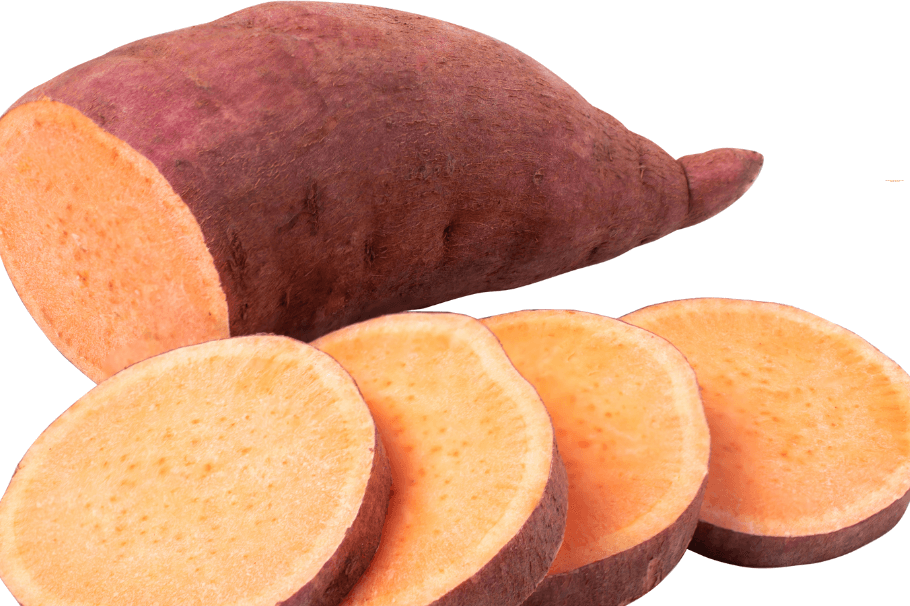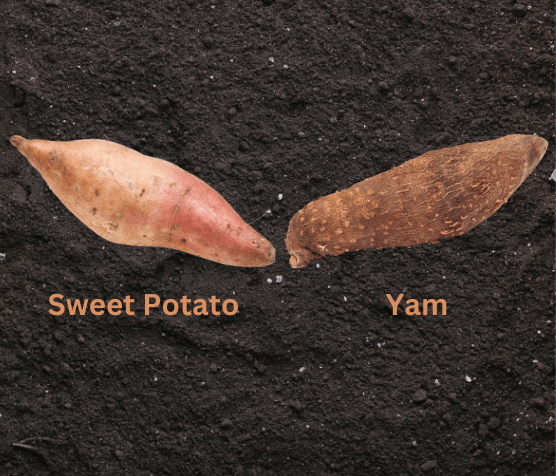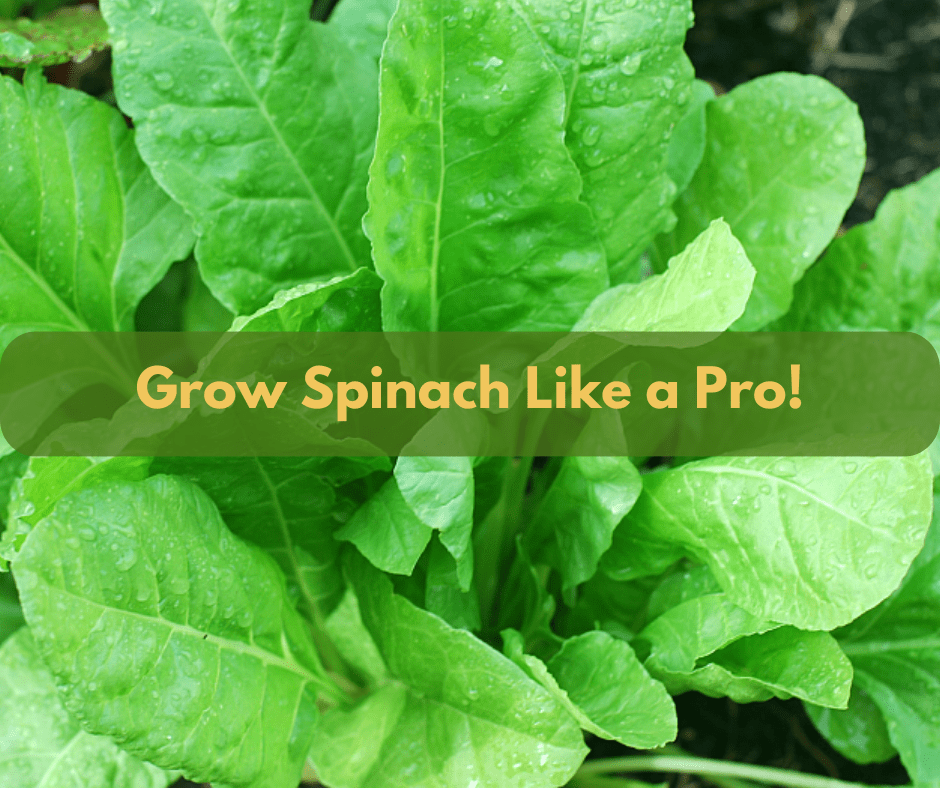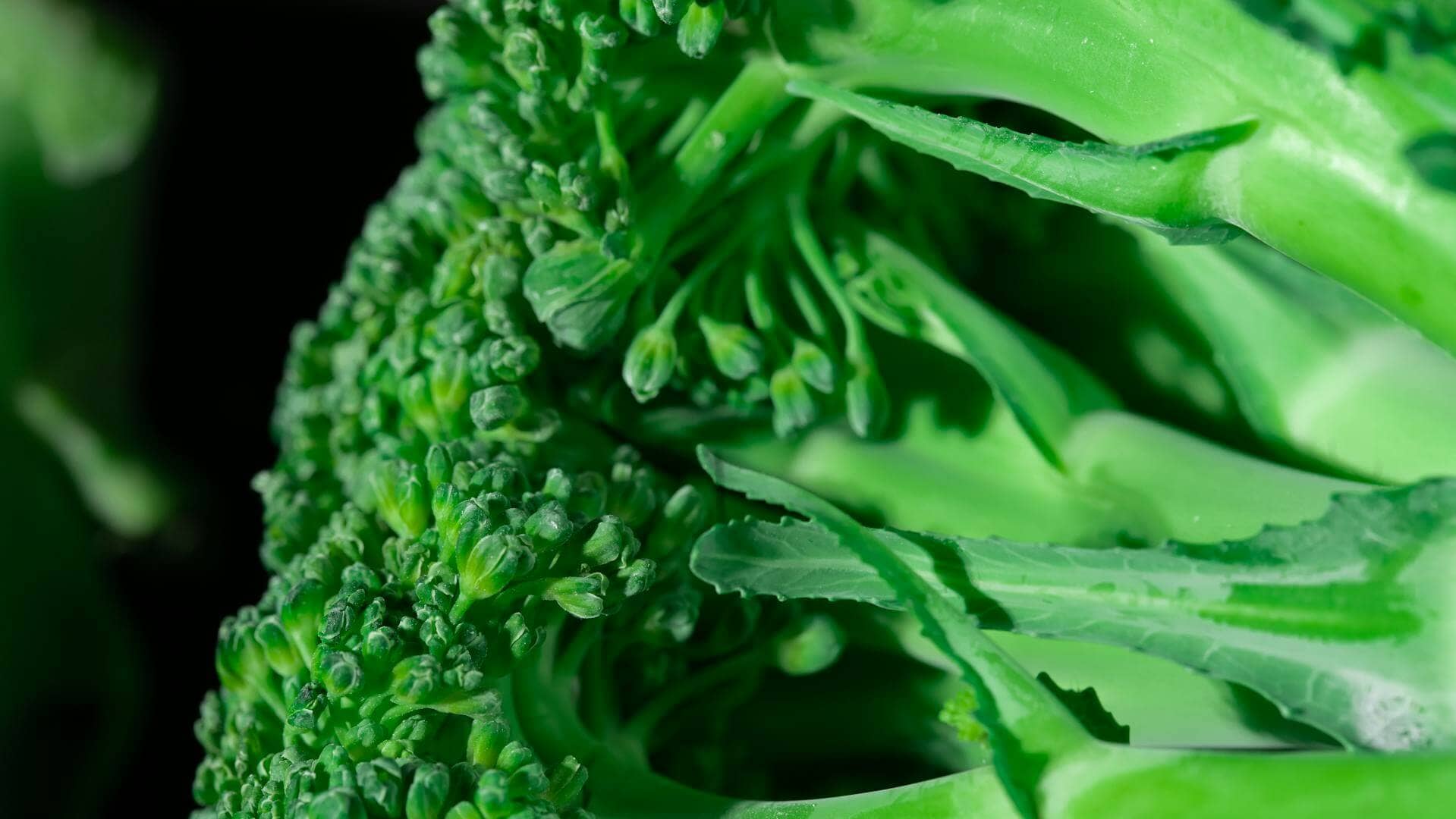This post may contain affiliate links. As an Amazon Associate we earn from qualifying purchases.
How long do sweet potatoes take to grow? Keep reading to find out!
When it comes to growing sweet potatoes, this is the most common question we receive. The length of time that sweet potatoes take to grow depends on several conditions. So, there’s no pat answer.
If you do everything right, you may be eating those amazing root vegetables within 90 days.
So, are you doing everything right? Let’s find out.
Origins of sweet potatoes
Yes, this may sound like a boring topic, but it’s important to understand a plant’s native growing conditions.
Sweet potatoes (Ipomoea batatas) originate from Central and South America. They have been cultivated for thousands of years and were a staple food for many indigenous cultures.
Sweet potatoes are now grown worldwide in warm climates and are a popular crop due to their versatility and nutritional benefits.
Sweet potatoes vs. yams
It’s common to confuse sweet potatoes with yams, but they are distinct vegetables. Sweet potatoes are from the Convolvulaceae family, while yams belong to the Dioscoreaceae family.
Yams are starchy tubers native to Africa and Asia, with a rough, bark-like skin. In contrast, sweet potatoes have a smooth skin and come in various colors, including orange, purple, and white flesh varieties.
The confusion often arises in the United States, where some varieties of sweet potatoes are mislabeled as yams.
USDA hardiness zones
Sweet potatoes thrive in USDA hardiness zones 8-11. Enter your ZIP Code to find your zone right here on Gardenologist!
They require a long growing season with warm temperatures, ideally between 70°F and 85°F (21°C to 29°C). In cooler climates, they can be grown as annuals, but in their native tropical and subtropical regions, they can be perennial.
Like many of us, they don’t tolerate cold weather very well.
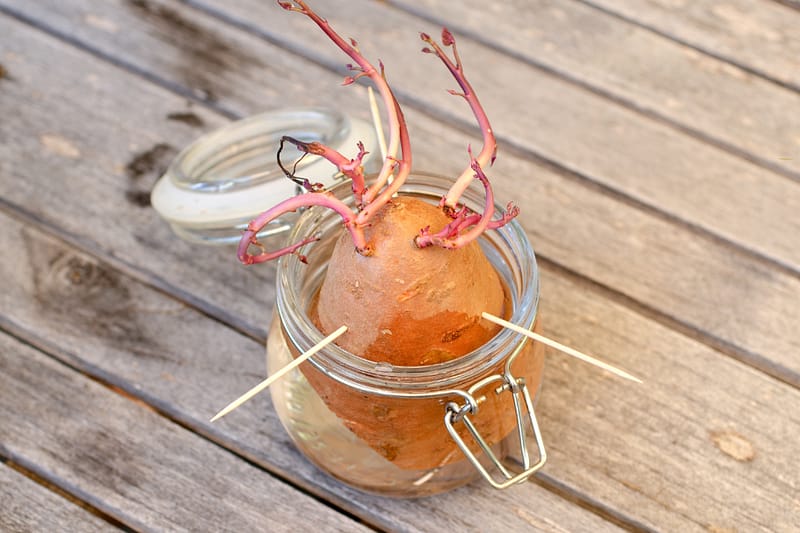 Starting the slips
Starting the slips
Now this is where it gets a bit confusing for the new sweet potato grower.
What is a “slip?”
Think of it as a sweet potato cutting that you need to root before planting.
You know how potatoes and sweet potatoes will start growing if left too long in the cupboard? The leafy shoots that start popping out are the slip.
You want to allow these little chunks of goodness to grow about 10 weeks before your last frost. Find your date by entering your ZIP Code at Almanac.com.
If at all possible, use slips from organic potatoes. Since growers don’t use growth inhibitors on these vegetables, you’ll have much better luck growing and then rooting the slips.
If your potatoes are new, and have yet to sprout spontaneously, you’ll need to take some extra steps. Don’t be nervous, we show you how.
If you have some that are sprouting, you can shorten the aforementioned 10 week timeframe to 6 to 8 weeks.

Supplies you’ll need to nudge your sweet potatoes into sprouting:
- Sweet potato
- Toothpicks
- Jar or vase with a large opening (we use the large canning jars)
- Water
The rooting end of the sweet potato needs to be submerged in the water, so find which end that is. Typically it will be pointier than the other end and you may see more root hairs as well.
Push toothpicks into the sweet potato to hold the sprouting end (or the end that will sprout eventually) above the water.
Set the lower end (the rooting end) in a jar of water, balanced at the rim by the toothpicks, and wait for roots to form. It may take several days to see them and perhaps weeks to become large enough to remove them from the water. If they’ve already sprouted, but the sprouts are tiny, follow the above procedure.
If the sprouts are at least a couple inches tall, snap them off and put them in their own glass of water, much as you would when rooting a houseplant cutting.
Should you decide to root in soil, be aware that this doesn’t always work. The advice is to cut the sweet potato into big chunks. Some gardening bloggers and YouTubers recommend that you “ensure each chunk has at least one eye.”
The problem with this advice is that this is a sweet potato, not a russet or some other type of real potato. It doesn’t have eyes.
“Sweet potatoes have no eyes. If you cut a sweet potato into chunks and plant the chunks, all you will accomplish is rotting chunks of sweet potato,” according to Ted Griess with the University of Nebraska Lincoln Extension’s Horticulture department.
Planting out the slips
Well, looky there! Your sweet potato has roots.
If they are a couple of inches long (just guestimate if they look long enough to take on the big, wide world) and there will be no additional frost in your area, let’s get those cuties into the soil.
Remember that the planting site also requires lots of sunlight; at least 6 to 8 hours a day.
The planting site will get at least 6 to 8 hours of direct sun per day, right? It’s the one thing you can’t fudge on (well, that and water) when growing sweet potatoes.

To raise the soil’s pH, you’ll need to till some limestone down into where the potatoes will be growing. How much limestone?
Here, I defer to the experts. Navigate to the University of California at Davis website. Scroll down a little and you’ll find some charts. The first one is how much limestone to add per your soil type.
If you need to lower the soil’s pH, use Table 3 at the same website. This will direct you on how much sulfur to add to the soil.
Before planting you’ll also want to add cottonseed meal or bloodmeal to the soil at the rate listed on the product’s label. See the Resources section below for our recommendations.
Work the product into the root zone and blend well with your soil. Create planting rows that are at least 3 feet apart and, in those rows, space the slips no less than 12 inches apart. Bury them up to the halfway mark of the slip’s stem.
 Do sweet potatoes need a lot of water?
Do sweet potatoes need a lot of water?
Sweet potatoes need consistent moisture, especially during the first few weeks after planting. Water the plants thoroughly and regularly to keep the soil evenly moist but not waterlogged.
Mulching around the plants can help the soil to retain moisture and suppress weeds. Once established, sweet potatoes are relatively drought-tolerant, but they will produce better yields with regular watering.
Fertilizing sweet potatoes
The experts at Oklahoma State University figured out that “A crop of sweet potatoes utilizes about 110 pounds of nitrogen, 15 pounds of phosphorus, and 150 pounds of potassium per acre from the soil.”
That’s a whole lot of nutrients! And, like most home gardeners we know, you’re chomping at the bit to get to the nearest big box store to pick up sacks of fertilizer.
Whoa there, skippy. Fertilizer during growth can actually inhibit sweet potato production. Yes, add it to the soil before planting, but after that (believe it or not) watering consistently and in the proper amount will help boost your plant’s production.
 Growing period and time to harvest
Growing period and time to harvest
Finally: The answer to your question! Sweet potatoes typically take about 90 to 170 days to mature from slips to harvest, depending on the variety and growing conditions.
Most varieties are ready to harvest 100 to 120 days after planting the slips. The exact timing can vary, so it’s essential to monitor the plants and check for signs of maturity.
Scroll down for more tips on harvesting sweet potatoes.
Common pests and diseases to look out for
Sweet potatoes are susceptible to several pests and diseases. Common pests include These pests can damage the plants and tubers, so regular monitoring and preventive measures are crucial.
-
Clemson University – USDA Cooperative Extension Slide Series , Bugwood.org licensed under a Creative Commons Attribution 3.0 License. Sweet potato weevils: They look kind of like beetles but they have big snouts. They can easily decimate a sweet potato crop. The pupa, (mature larva) carve holes (technically known as “chambers) within the stem or the tuber itself.
Sadly, one of the most obvious symptoms of an infestation, the vines turning yellow, doesn’t show up until it’s too late.
Combat these buggers with biological insecticides, such as Heterorhabditis bacteriophora or Steinernema carpocapsae. Learn where to shop for them in the Resources section at the end of this blog post, or click here.
- Wireworms: Click beetle larvae, known as wireworms, infest the roots and the leaves of the sweet potato plant. There are several ways to avoid an infestation. First, don’t plant in a field in which you’ve grown corn.
R.J. Reynolds Tobacco Company ,Bugwood.org, licensed under a Creative Commons Attribution 3.0 License.
Next, till the soil and turn it over real good in the fall. Disturbing them will dissuade them from sticking around.
Bio-pesticides are currently under research, but the experts at the University of Florida claim that one of the more promising to help in the battle with wireworms is the beneficial nematode Steinernema carpocapsae.
Naturally, you’ll want to follow the label instructions when adding these to the soil, but the pros in Florida reiterate the importance of applying the nematodes to “… moist soil, and moisture should be maintained for at least eight hours” after application.
Again, see the Resources section for where to buy.
- Aphids: “The melon aphid and green peach aphid are the most common species of aphid on sweet potatoes,” according to Mollie Johnston at Louisiana State University’s Ag Center.

If, after this stage, the plants turn and/or wilt, you need to remedy the infestation..
Check on the undersides of the leaves and along the stems, especially near the tips.
Treat the sweet potato vines with Arber’s Bio-Insecticide (find out where to buy in the Resources section). Please follow the application instructions to the letter.
Diseases that affect sweet potatoes include Fusarium wilt, root rot, and leaf spot, among others.
The best way to promote healthier sweet potato plants is to space them properly to allow for air circulation between them.
 Harvesting sweet potatoes
Harvesting sweet potatoes
Harvest sweet potatoes before the first frost in the fall. You’ll know they are ready to harvest when the very ends of the vines begin to turn yellow.
When I was a beginner sweet potato grower I remember most of the advice I read online told me to “gently dig around the plants with a garden fork, being careful not to damage the tubers.”
I’m a clutz. Sure as you-know-what, I’d be stabbing those taters left and right. Instead, I just glove up and dig in with my hands.
A damaged sweet potato doesn’t store well and is, therefore, one that doesn’t make it to the kitchen.
Lift the tubers out of the soil but don’t wipe wet soil off of them. Allow the sweet potatoes to dry in the sun for a few hours and then gently brush the soil from them.
Curing sweet potatoes
Curing, although a hassle, is an essential step to enhance the sweetness and shelf life of sweet potatoes.
After harvesting, cure the tubers by placing them in a warm, humid environment (85 degrees Fahrenheit with 90% to 95% humidity) for about 7-10 days. This process helps heal any cuts and converts starches into sugars, improving the flavor.
There are several ways to provide the critical humidity rate. Place the sweet potatoes in a plastic bag in which you’ve poked holes all around it. Some gardeners even put a wet paper towel in with the sweet potatoes to provide more humidity. But then you have to be able to remember to check it to ensure it’s still wet.
Finally, here’s a tip from the Santa Clara County (California) Master Gardeners:
Place a space heater “… in a pantry or small room and adjust the temperature to about 85°F; place a bucket of water in the pantry/room as well. Gently place the sweet potato roots in well-ventilated boxes and place the boxes on a small table or platform above the heater (several boxes can be stacked).”
They go on to say that it should take only one week to cure the sweet potatoes using this technique.
They conclude with a warning about that heater: “… be sure the heater is not near flammable items and that safety precautions are taken to avoid overheating of the heater, which can cause a fire. The heater should be placed on a non-flammable surface.”
Storing sweet potatoes
After curing, store sweet potatoes in a cool, dry, and dark place with good ventilation. The ideal storage temperature is between 55°F and 60°F.
Under these conditions, sweet potatoes can last for several months. Do not store them in the refrigerator, as cold temperatures can affect their texture and taste.
 Toxicity to pets
Toxicity to pets
While sweet potatoes are safe for human consumption, parts of the plant can be toxic to pets. The leaves and stems contain compounds that can be harmful to dogs and cats if ingested in large quantities. If you have pets, ensure they don’t have access to the sweet potato plants.
You feel ready to take on the challenge of growing sweet potatoes? Feel free to drop any additional questions in the comments section, below. We’re happy to help!
Resources
Cotton seed meal or blood meal
Steinernema carpocapsae (to combat sweet potato weevils)
Heterorhabditis bacteriophora (to combat sweet potato weevils)
Bio-Insecticide from Arber (for use in managing sweet potato aphids)
